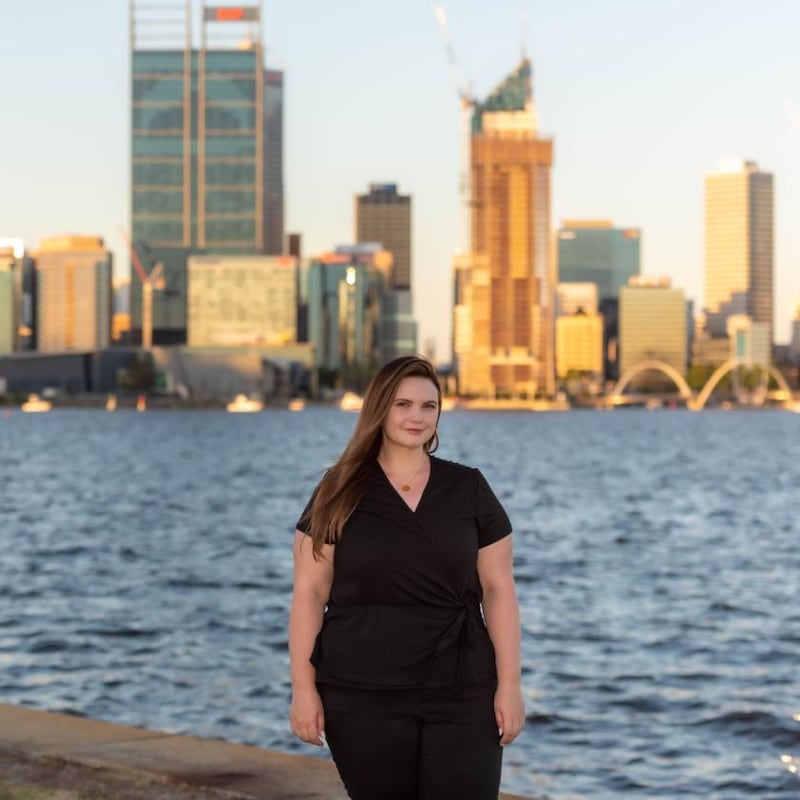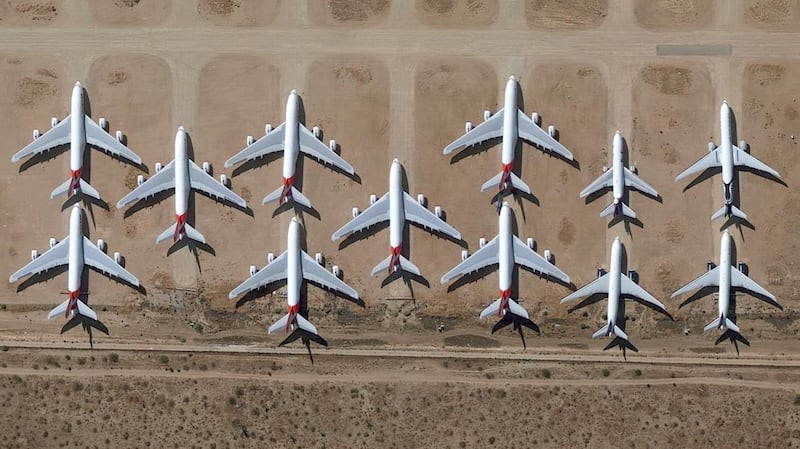There’s one image from the pandemic that haunts me. It’s a Google Earth photo of Qantas planes in the Mojave Desert, parked up on the compressed sand, precise in formation, sun glinting off their bright white fuselages.
When the Australian borders closed in 2020, Qantas’s fleet of super jumbos departed en masse, bound for the Mojave aircraft boneyard, where they would enter a deep sleep. Return date? The chief executive of Qantas, Alan Joyce, estimated 2023, but the truth was that no one really knew. We were entering uncharted territory, after all.
The lack of flights and strict caps on the number of people allowed entry to Australia meant that even if you could leave, there was no guarantee of getting back in
There was something so final about it. The planes that would transport me from Perth, in Western Australia, to my home town of Clonakilty, in Co Cork, for weddings and Christmases were now gathering dust in an eerie desert wasteland. I imagined the rows of empty seats in the darkened cabins, the deserted cockpits, the electric hiss of rattlesnakes outside. It could have been the set of a dystopian movie. Except it wasn't.
And from there my mind wandered further. What if all the commercial airlines servicing Australia went bust? It didn’t seem so far-fetched, not when businesses were haemorrhaging jobs and there was talk of a depression so deep, so dark that it would make the Great Depression look like the Celtic Tiger years. It’s basic economics, after all. Businesses need to make money. Fleets need to be maintained.
Australia is only a day away. That’s the reassuring line everyone trots out when you’re moving here. True, you can be home in less than 24 hours by commercial airliner, but it’s more than 15,000km. As I watched the infrastructure we rely on so heavily fall away, it was like a drawbridge coming up between Australia and home. Every one of those kilometres stretched out in front of me, and for the first time since arriving here, in 2011, home felt a long, long way away.
As a citizen here, border closures meant that even in the event of an emergency I could not leave without a special exemption. They were hard to come by; expat social-media groups are littered with horror stories of people unable to depart, even on compassionate grounds. The lack of flights and strict caps on the number of people allowed entry to Australia meant that even if you could leave, there was no guarantee of getting back in.
Over FaceTime, I reassured my mum that the borders wouldn’t be closed for too long, that I’d be home before she knew it. Relax. They’re hardly going to close a country for years... Everything would be normal soon, I told her. Normal. Normal. Normal. But I wasn’t so sure.

One night, at the height of peak Covid mania – in the banana-bread-and-Zoom-quiz phase – I Googled sailing courses. It might be the only way out of here if everyone goes bust, I told my sister. We had a laugh, but I was only half-joking.
But this month things changed. I woke up a few days ago, made a coffee and checked the news like I do every morning. And there it was: a video of the first Qantas A380 to return to Australia from hibernation. I watched as the giant of the skies cut through the fluffy white clouds and soared over the city skyline before touching down at Sydney Airport.
After 593 days in the desert, and a stop in Germany for maintenance work, the planes were coming back. The hinges of that metaphorical drawbridge were being oiled. Cheers erupted on the news video as the pilots emerged to a hero’s welcome. Staff lined the hanger and waved little red flags. One pilot even revealed that he’d been working as a painter and decorator during the pandemic.
It was a moving sight. For the first time in a while I dared to imagine landing at Cork Airport again, getting battered by the wind on the way to collect a rental car, and driving those narrow, twisty roads home. No need for sailing, then.
There's no doubt about it: we've been lucky here in Australia, especially in Western Australia. Our experience of the pandemic has been very different from the rest of the world's; we escaped largely unscathed. What kept us up at night wasn't the virus, it was the not knowing. Not knowing when – or if – we'd be back.

Things are starting to feel different now. The return of the Qantas A380 fleet is the second bit of good news in as many weeks. In late October the Australian government announced that the parents of Australian citizens and permanent residents are now exempt from border restrictions. They’re still subject to the individual quarantine requirements of the state or territory they’re visiting, but it’s a start. If push comes to shove, they can get here.
Australians can also depart now without an exemption, and some states have eased their quarantine requirements for inbound, double-vaccinated travellers. It’s important to add, though, that this easing of restrictions doesn’t apply to most temporary visa holders in Australia. There are tens of thousands of Irish people who have worked hard here during the pandemic, many of whom aren’t citizens or permanent residents. For the time being they don’t have the luxury of leaving and returning easily, and their parents aren’t exempt from border restrictions. But there is a glimmer of hope on the horizon now.
Let’s hope it’s not too much longer before Australia really is just 24 hours away again – for all of us. It feels like the time is coming.
Fiona Mayers is a marketing communications manager, writer and radio producer















